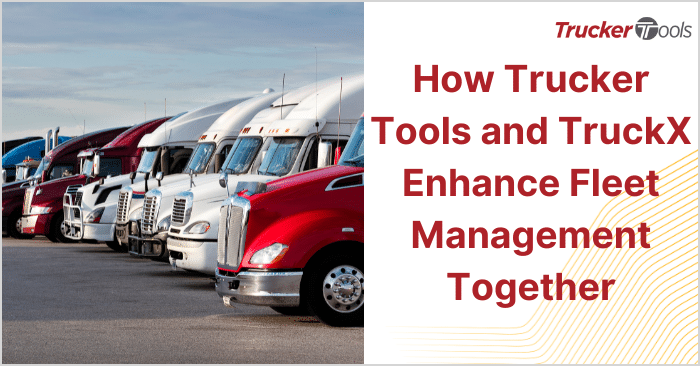As a freight broker or logistics provider, you already know that this isn’t your typical peak shipping season. Raw material and labor shortages, port congestion, longer detention times, capacity shortages, unpredictable supply and demand, a rise in online consumer spending and COVID-19 outbreaks are making this an unusual peak season, to say the least. With this in mind, Trucker Tools recently hosted “Keeping Carriers in Your Network Through an Unprecedented Peak Season,” a webinar with Logistics Management Magazine’s Contributing Editor John Schulz and Trucker Tools’ Founder and CEO Prasad Gollapalli. In the webinar, Schulz and Gollapalli offered insights into market trends and discussed effective strategies for freight brokers to keep freightmoving and carriers in their networks.
Here are five insights from the webinar on retaining carriers during an unprecedented peak season.
1. What Makes This Peak Season Different
“Peak season this year can be described best as maybe the cherry on top for the ice cream sundae,” Schulz said. “With the pandemic and the ensuing shutdown and then ramp up, this entire year has more or less been a peak season because of the unevenness in demand levels, the uncertainty of capacity and just the fact that the pendulum has swung in favor of the carriers now. They are calling the shots. If a shipper’s freight does not fit a carrier’s profile, and by that I mean if it’s not on a route or a lane that the carrier needs, the shipper is in danger of being dropped by that carrier. Trucking is obviously always a cyclical market. Shippers have had it their way for quite a bit of the century, and the pendulum has swung in favor of the carriers. This peak season, such as it is, is a continuation of what’s been going since about March or maybe even earlier this year, which usually is the quietest period of the year.”
2. Recruitment and Retention Evolving
“Every trucking executive I’ve talked to, I ask what they’re doing differently around recruitment and retention and more or less no matter how I phrase it, the answer comes back, ‘We’re doing everything we can,’” said Schultz. “The average age of a truck driver on the highway today is about 57 or 58. The American Trucking Associations came out with an estimate last month that the current shortage of drivers is at 80,000. Carriers love to recruit out of the military — that’s a possibility. CDL schools are actually producing about half as many drivers as they did three or four years ago, and there are a number of reasons for that, chief among them is the availability of loans for those types of schools has sort of dried up. Carriers are trying to broaden their base. About eight percent of drivers are women, but that number has been flat for the last 10 or 15 years. OEMs also are making more heavy duty trucks with automatic transmissions, which makes it a lot easier to maneuver an 80,000 pound truck. They’ve raised pay. They’re going to have to continue to raise pay.”

3. The Challenges of Bringing New Drivers into Trucking
“I think it is a couple of things,” Schultz shared. “One is — and I hate to use the word — a negative perception of the industry. The perception of the trucking industry to a lot of people is not ideal. It is viewed as an old man’s industry, specifically an old white guy industry. There’s not a lot of diversification in the workforce, or at least that’s the way it’s perceived, but probably the biggest hurdle right now is competition. There’s strong competition from other industries which may be transport related, which may not, where everybody is looking for workers in the service sector. And I mean everyone. So if you have any transferable skills and many of these people do, there may be other options that didn’t exist even two years ago. This is the post-COVID labor shortage specifically in the service industry, and I think that’s a factor. There are several factors at work here. There’s demographics. There’s the drug testing clearinghouse. There’s perceived poor working conditions. There’s the pay.”
4. How Shippers Are Adapting
“Some of the answers are very simple and others are a little more complex and may require a little more expense,” Schulz said. “If I’m a grocery warehouse operator in northern New Jersey where the infrastructure is 100 years old, I may not be able to eliminate the waiting at my docks and those types of companies are going to pay a price for their outmoded or outdated operation. However, if I’m a next day delivery warehouse type operation and I’m located right off the ramp of I35 in Wichita, Kan., and I have a nice clean modern 100-door warehouse box facility, I should have the wherewithal to get trucks in and out. The simplest thing is moving to an 18 or 24-hour operation. The days when the warehouse or the dock closes at 6:00 PM are ending. Time is money, so these truckers do not want to be shut down at 6:00 PM if they have time left on their clock.”

5. Gain a Competitive Edge with Digital Freight Matching, Digital Load Booking
“A lot of this eventually comes down to automation and technology,” Schultz explained. “For brokers or transportation managers, automating the running of the back end of the officeto manage as many loads per person per day is the ultimate goal. They can do this with proprietary off the shelf technologies or automating part of their freight brokerage processes. Increasing carrier utilization and better planning can result. The idea that everything has to be manually entered is onerous now. Technology frees up human capital. That’s really the goal here. Everybody is trying to do more with fewer people. Technology can serve a valuable, valuable role in load tendering and scheduling back office automation of a whole host of situations and processes that normally were done manually, but now can be easily automated. If anybody is out there thinking about an expenditure on automation, you probably will earn back that expenditure over a certain amount of time, and it’s not a long period of time. These greater efficiencies allow you to be a broker of choice and make you more appealing to carriers in this tight market.” For the rest of the conversation, watch “Keeping Carriers in Your Network Through an Unprecedented Peak Season on demand. Schedule a free demo of Trucker Tools’ real-time visibility platform, Smart Capacity digital freight matching and Book-It-Now®.






